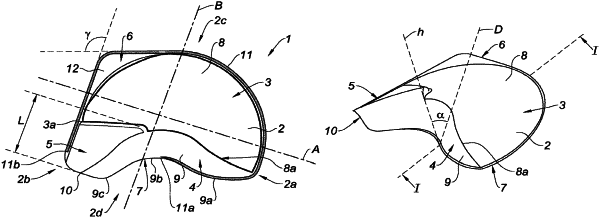| CPC A61F 2/0063 (2013.01) [A61F 2002/0068 (2013.01); A61F 2210/0004 (2013.01); A61F 2210/0071 (2013.01); A61F 2230/0004 (2013.01); A61F 2230/0023 (2013.01); A61F 2230/0063 (2013.01); A61F 2240/001 (2013.01); A61F 2250/0018 (2013.01)] | 20 Claims |

|
1. A method of repairing a hernia in an inguinal region of a human body comprising:
providing a prosthesis including a piece of biocompatible material having an initial preformed three-dimensional shape including a lateral side and a medial side extending along a medial-lateral axis and a superior side and inferior side extending along a superior-inferior axis, the piece including
a first portion, configured to face an anterior abdominal wall, the first portion forming a partial spherical cap surface shaped and dimensioned to substantially conform to the anterior abdominal wall and including an inferior edge extending between the lateral and medial sides,
a second portion, configured to face a psoas muscle, the second portion extending in an inferior direction from at least a lateral portion of the inferior edge of said first portion and forming a wavy-shaped wall, shaped and dimensioned to substantially conform to the psoas muscle, and
a third portion forming an arched part, the arched part extending longitudinally substantially in the inferior direction from at least a medial portion of the inferior edge of the first portion, the arched part extending radially substantially in a front direction, the third portion configured to face the medial inferior area of an inguinal anatomy,
applying pressure to the prosthesis to deform the prosthesis onto itself to form a deformed prosthesis,
introducing the deformed prosthesis through a trocar to a site of implantation in the inguinal region of the human body,
deploying the deformed prosthesis to return to the initial preformed three-dimensional shape, and
positioning the prosthesis such that the third portion covers the medial inferior area of the inguinal anatomy.
|